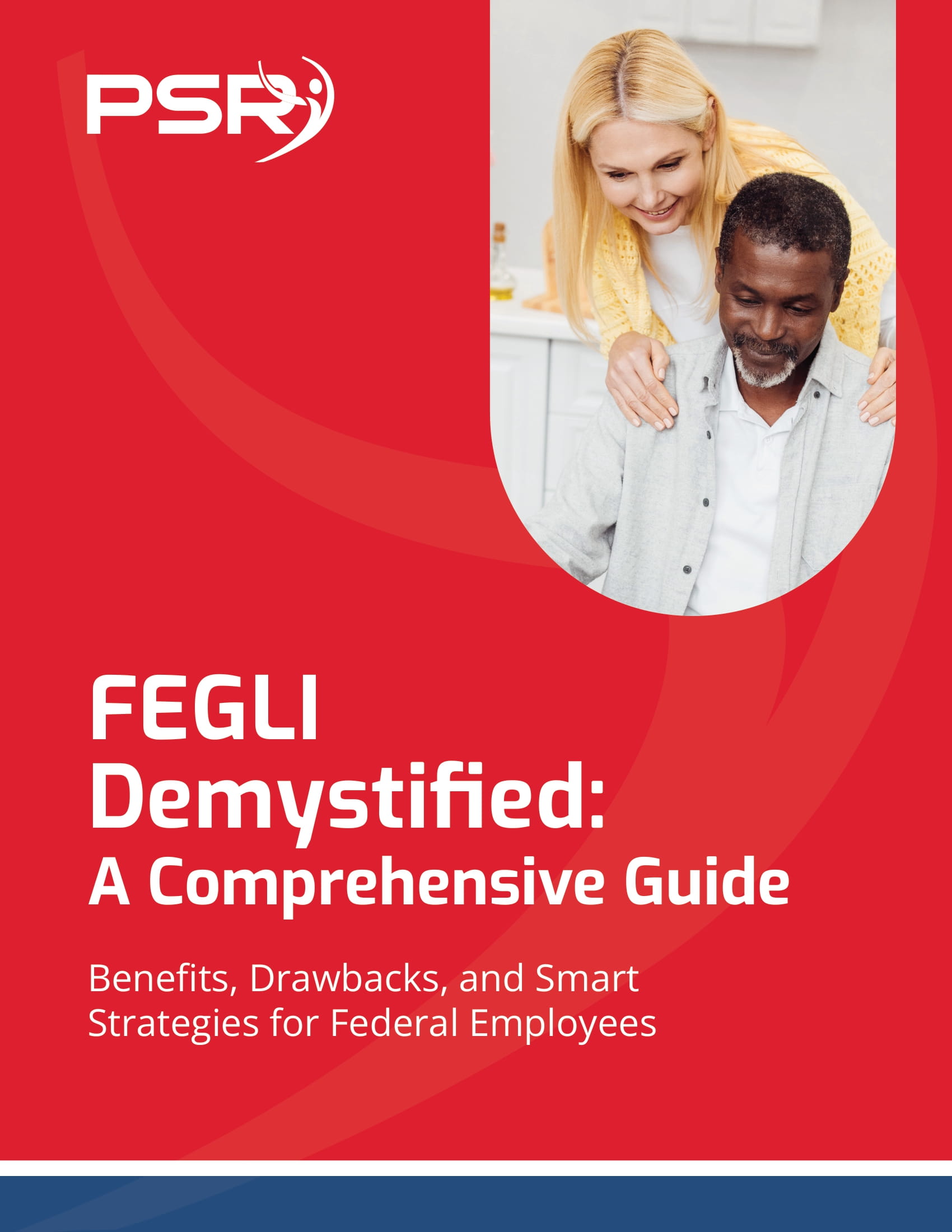Key Takeaways
-
Inflation in 2025 is affecting nearly every aspect of your federal employee benefits package, from your pension calculations to your health insurance costs.
-
Proactive planning with a licensed professional listed on this website can help you minimize inflation’s impact and preserve more of your benefits.
The Inflationary Pressure You Might Not Have Noticed
- Also Read: How Civilian Employees Can Turn Military Time Into a Bigger FERS Pension
- Also Read: Dropping FEGLI Sounds Smart—Until You Realize What It No Longer Covers After Retirement
- Also Read: Hitting 20 Years in Law Enforcement? Here’s What You Can Expect From Your Pension
Understanding these shifts is key to maintaining your financial security, both now and when you retire.
Cost-of-Living Adjustments (COLAs): Helping, But Not Fully Keeping Pace
Every year, federal pensions under CSRS and FERS are adjusted through a cost-of-living adjustment (COLA). However, COLAs are not always fully aligned with the real increases you experience in everyday expenses.
-
For 2025, the COLA adjustment was 3.2%, a moderate increase compared to the 8.7% spike seen in 2023.
-
If inflation spikes sharply within a year, your COLA might lag behind the actual cost increases, especially for essentials like healthcare and housing.
For FERS employees, the adjustment is even more muted: when inflation exceeds 2%, FERS COLAs are typically reduced by 1 percentage point. This means that even though you receive a boost, it might not fully shield you from real-world cost hikes.
Rising Health Insurance Premiums
The Federal Employees Health Benefits (FEHB) program remains a strong benefit in 2025. However, premiums have steadily increased.
-
In 2025, the average FEHB premium rose by about 11.2%, with enrollees absorbing roughly a 13.5% increase.
-
As healthcare costs outpace general inflation, your share of the premiums, copayments, and deductibles keeps growing.
These annual increases compound over time, making health insurance a much larger slice of your retirement budget than it used to be. Planning for these rising costs is essential if you intend to retire within the next five to ten years.
Thrift Savings Plan (TSP) and Inflation’s Double-Edged Sword
Your Thrift Savings Plan (TSP) is directly impacted by inflation, but not always in ways you might expect.
-
Higher inflation generally pushes the Federal Reserve to maintain or increase interest rates.
-
While this may help the G Fund offer slightly better returns compared to past years, it can pressure stock funds like the C, S, and I Funds by creating market volatility.
Inflation also erodes the real value of your TSP savings if the investment returns do not outpace inflation. For retirees making withdrawals, this effect becomes even more pronounced.
In 2025, the TSP contribution limits increased — $23,500 for regular contributions and up to $34,750 for those aged 60-63 — but keeping pace with inflation still demands careful asset allocation and withdrawal strategies.
Social Security and the Income Tightrope
If you are planning to integrate Social Security benefits into your retirement income, inflation affects you there too.
-
The 2025 Social Security COLA was set at 3.2%.
-
However, Medicare Part B premiums also rose to $185 per month, often consuming much of the COLA increase.
This means your “real” Social Security benefit — the part left over after healthcare costs — may feel stagnant or even shrink compared to your living expenses.
Careful timing of your benefit claim, ideally after reaching full retirement age (67 for those born in 1963), can help counter some of these effects.
Retirement Timing: Inflation’s Hidden Influence
Inflation also changes the math around when it makes sense for you to retire.
-
Early retirement under the MRA+10 provision might seem attractive, but reductions to your pension and healthcare affordability can be harsher under inflationary pressure.
-
Waiting longer to retire not only increases your pension calculation based on a “high-3” salary that may include inflation-adjusted raises, but also gives your TSP and Social Security benefits more time to grow.
In 2025, delaying retirement even a few extra years can sometimes add tens of thousands of dollars to your overall retirement picture.
The Impact on Survivor Benefits and Life Insurance
Inflation subtly impacts your survivor benefits and life insurance elections.
-
Survivor annuities under FERS and CSRS are based on your calculated annuity amount, which adjusts with COLAs after you retire.
-
Federal Employees’ Group Life Insurance (FEGLI) premiums escalate significantly with age, particularly past age 65.
If inflation drives up healthcare and living costs, your survivors could face tighter budgets despite the fixed nature of many benefits you leave behind. Reviewing and adjusting your survivor elections is a smart move in today’s economic environment.
Federal Long-Term Care Insurance (FLTCIP): An Uncertain Future
Federal long-term care insurance, through FLTCIP, has faced premium hikes and enrollment suspensions in the past few years.
-
While new enrollments remain suspended in 2025, existing policyholders have seen premium adjustments.
-
Inflation pressures in the healthcare sector raise concerns about whether existing benefits will keep pace with future long-term care costs.
If you have an existing policy, it’s important to review what it covers and what it may not in a rapidly changing healthcare cost landscape.
Inflation and Future Legislative Risks
Inflation also increases the risk of legislative changes that could affect your benefits.
-
Proposals have emerged in 2025 that could alter how your “high-3” average salary is calculated, potentially excluding locality pay to save government costs.
-
Discussions around shifting FEHB government contributions to a voucher model could increase your out-of-pocket expenses.
While none of these proposals are law yet, inflationary pressures make budget cuts more politically attractive, adding an additional layer of uncertainty for future retirees.
Strategies to Defend Against Inflation’s Effects
You are not powerless against inflation’s steady creep. Here are practical steps to help you protect your federal benefits package:
-
Review and Adjust Contributions: Max out TSP contributions if possible, and consider catch-up contributions if you’re age 50 or older.
-
Diversify Investments: Explore TSP lifecycle funds or other diversification strategies to help your portfolio grow faster than inflation.
-
Optimize Retirement Timing: Delay retirement, if feasible, to build a higher “high-3” salary base and larger pension.
-
Coordinate Benefits Carefully: Plan how FEHB, Medicare, and long-term care needs will fit together in your retirement years.
-
Update Beneficiary and Survivor Elections: Inflation and legislative changes can impact survivor payouts, so keep your designations and elections current.
-
Consult a Licensed Professional: Guidance tailored to your situation can help you build a smarter, inflation-resilient retirement plan.
How Inflation Will Keep Shaping Your Retirement Path
Inflation may not make headlines every day, but its influence over your federal benefits in 2025 is undeniable. From shrinking the value of your pension checks to pushing up health insurance premiums, inflation quietly demands more attention from you now than ever before.
Your future security depends on acting early and thoughtfully. By working with a licensed professional listed on this website, you can better prepare for whatever economic changes lie ahead, ensuring that your retirement dreams stay firmly within reach.









